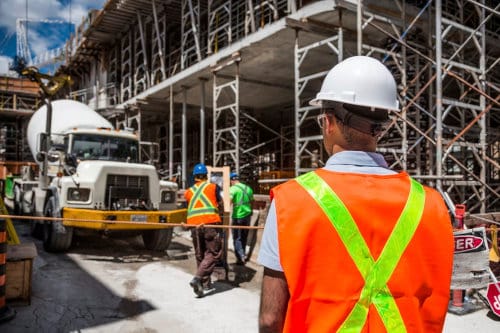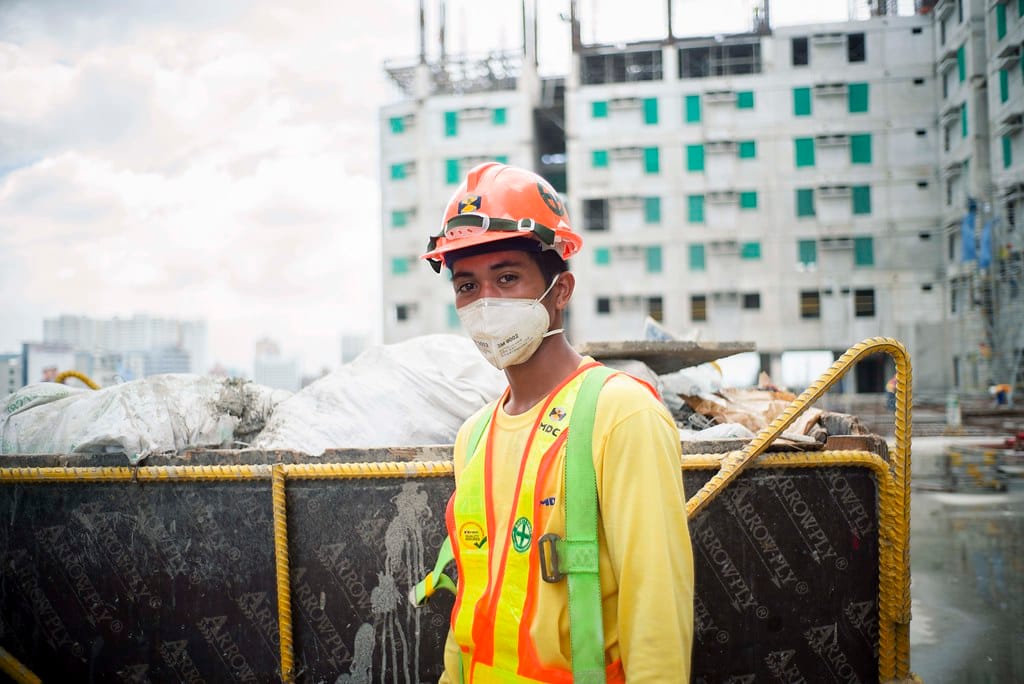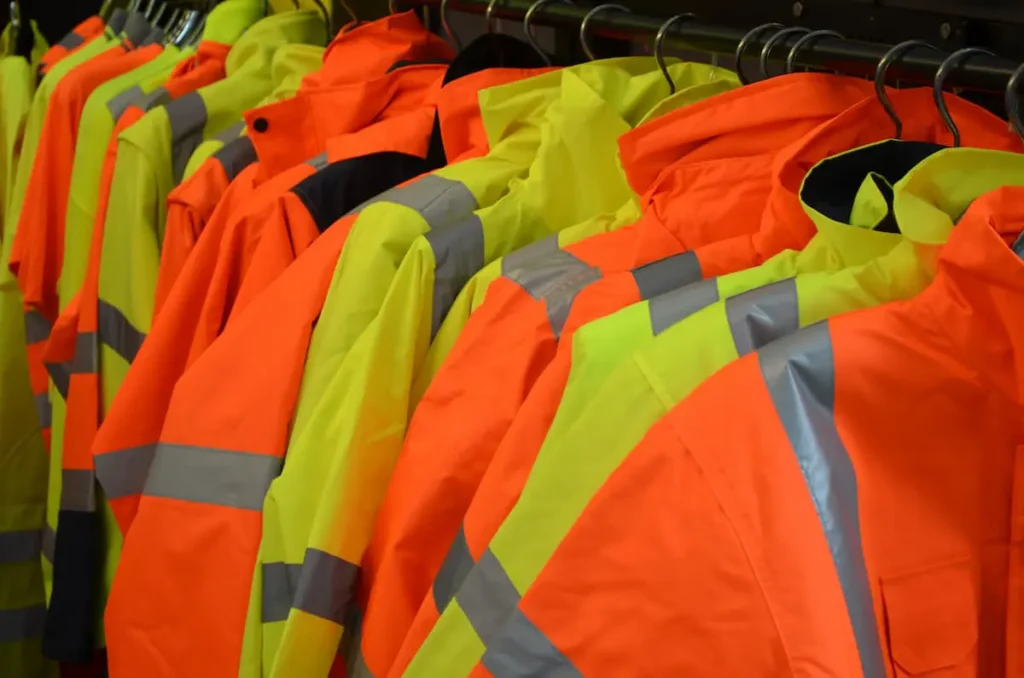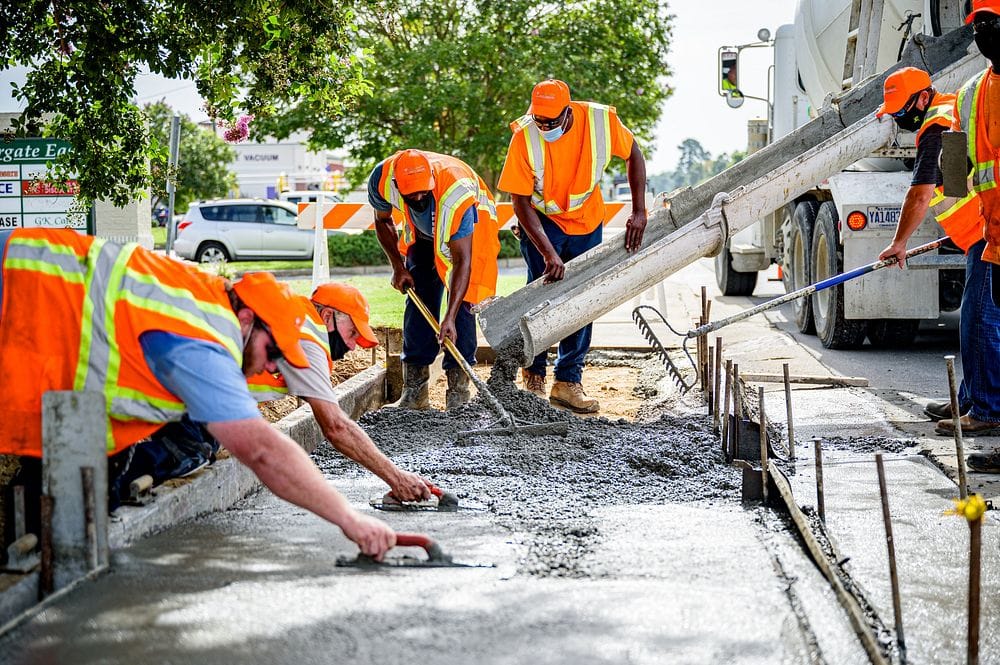
Hi-vis clothing can’t just protect you—it has to adapt to the weather too.
From scorching summer roads to freezing rail yards and soaking wet construction zones, high-visibility gear needs to do more than just glow—it needs to breathe, insulate, or repel water.
That’s where layering comes in.
Let’s talk about how to build a season-proof hi-vis workwear system that keeps your team safe, visible, and comfortable—all year round.
Why Layering Matters for Hi-Vis Clothing
Most worksites don’t offer climate control. PPE has to adjust as conditions change:
- 🌞 In summer: Risk = heatstroke, discomfort = non-compliance
- ❄️ In winter: Risk = cold stress, low dexterity, frozen zippers
- 🌧 In rain: Risk = soaked, heavy clothes reduce visibility and comfort
⚠️ If your gear isn’t climate-smart, your workers will remove it—or suffer in it.
✅ The best strategy? Build a layering system that adapts to changing temperatures, humidity, and visibility needs.
The Hi-Vis Layering System Explained
Think of hi-vis gear like this:
| Layer | Function | Garment Examples |
|---|---|---|
| Base Layer | Sweat-wicking, breathable comfort | Hi-vis T-shirts, polos, lightweight FR undershirts |
| Mid Layer | Warmth, insulation, moderate visibility | Softshell jackets, sweatshirts, vests |
| Outer Layer | Weatherproofing + full compliance | Hi-vis rain jackets, winter parkas, coveralls |
✅ Each layer should have some level of visibility (color or tape), especially if worn solo during low-risk tasks.
Summer Hi-Vis Workwear Tips ☀️
Challenges: Heat, sweat, UV exposure, risk of heat exhaustion
What to Wear:
- Lightweight Class 1 or 2 T-shirts or polos (moisture-wicking)
- Mesh-back vests for airflow over shirts
- Hi-vis baseball caps or bandanas for sun protection
- FR-rated short sleeves if working near heat or flame
- Avoid over-layering—keep it breathable
Material Tips:
- Polyester mesh or FR-modacrylic blends
- Avoid heavy cotton in humid climates
✅ Use ventilated designs (underarms, back panels), and breakaway closures for emergencies.
Winter Hi-Vis Workwear Tips ❄️
Challenges: Cold temps, reduced dexterity, bulky movement, snow blindness
What to Wear:
- Base: Long-sleeve hi-vis thermal undershirts
- Mid: Softshell or fleece-lined FR jackets
- Outer: Waterproof Class 3 parka or insulated bomber jacket
- Bottoms: Hi-vis trousers with lining or bib overalls
- Accessories: Hi-vis beanies, neck gaiters, waterproof gloves
Material Tips:
- Quilted lining, FR fleece, PU-coated fabrics
- Ensure zippers and buttons stay operable in freezing temps
✅ Look for ANSI/ISEA 107 Class 3 or EN ISO 20471 Class 3 full-body gear for low-light + snow environments.
Rainy or Wet Weather Hi-Vis 🌧
Challenges: Soaked gear = heavy, cold, hard to see
What to Wear:
- Hi-vis rain jackets or suits with sealed seams
- Waterproof pants or coveralls (Class 3 if full body needed)
- Hoods with reflective trim (removable if needed)
- Hi-vis rain boots or spats
- Layer over breathable base (not cotton)
Material Tips:
- PU-coated polyester or FR-treated breathable waterproof fabric
- Reflective tape must be washable and water-resistant
✅ Choose garments labeled EN343 or ANSI 107 Rainwear Compliant for verified rain protection.
Matching Layers to Visibility Class
| Visibility Class | Typical Garment Use | Layer Recommendation |
|---|---|---|
| Class 1 | Indoors, low-speed zone, daylight only | Base or mid-layer only (e.g., vest) |
| Class 2 | Construction, logistics, road repair | Base + vest or visible softshell |
| Class 3 | High-speed zones, night, winter | Outer layer: parka, full coverall |
✅ Make sure outer layer meets highest required class, even if inner layers don’t.
Real-World Layering Examples
1. Summer Road Crew (Day Shift)
- Hi-vis mesh vest + lightweight polo
- Hi-vis cap
- Optional: tool belt with built-in reflectivity
2. Winter Rail Worker (Night Shift)
- Thermal long sleeve + FR fleece jacket
- Class 3 waterproof parka
- Reflective pants + gaiters
- Hi-vis beanie
3. Warehouse Loader (Rainy Season)
- Class 2 polo shirt
- PU-coated rain jacket (Class 3)
- Waterproof hi-vis pants
- Anti-slip hi-vis boots
What to Ask Before Buying
- Do these garments support layering without bulk?
- Is the outer jacket certified to Class 3 if it’s the main visible item?
- Are all tapes and materials weather-tested (wash/rain/UV)?
- Do you offer FR and hi-vis combinations for arc-rated work?
- Can I build a modular set (base, mid, outer) from one supplier?
At workwearsolutions, we help you build layered hi-vis solutions for every climate, every class, every shift.
Conclusion
Hi-vis clothing doesn’t just need to be bright—it needs to be smart for the season.
Whether it’s heatstroke in July or frostbite in January, you can’t afford to let weather reduce compliance or visibility.
As a buyer:
- Build a layering system, not just a jacket
- Adapt visibility gear to temperature, moisture, and mobility
- Ensure outer layer = full compliance
- Look for weather-tested, washable, modular options
Need help building a season-proof high-visibility uniform program? I’ll help you source gear that’s ready for real-world conditions—all 12 months of the year.
📩 Contact: [email protected]
🌐 Visit: www.workwearsolutions.net
Zion Zhang
Recent Posts
 Hi-Vis Clothing by Industry: Tailoring Visibility Gear to the Job2025年7月4日High-visibility workwear isn’t one-size-fits-all. The right […]
Hi-Vis Clothing by Industry: Tailoring Visibility Gear to the Job2025年7月4日High-visibility workwear isn’t one-size-fits-all. The right […] Understanding ANSI/ISEA 107 and EN ISO 20471: A Buyer’s Guide to Hi-Vis Standards2025年7月4日When it comes to high-visibility clothing, color and […]
Understanding ANSI/ISEA 107 and EN ISO 20471: A Buyer’s Guide to Hi-Vis Standards2025年7月4日When it comes to high-visibility clothing, color and […] Choosing Between Yellow, Orange, and Red Hi-Vis: What Color Works Best?2025年7月4日Yellow, orange, or red? When it comes to high-visibility […]
Choosing Between Yellow, Orange, and Red Hi-Vis: What Color Works Best?2025年7月4日Yellow, orange, or red? When it comes to high-visibility […] High-Visibility Clothing: Enhancing Safety Through Visibility2025年7月4日In dangerous work zones, being seen is as important as […]
High-Visibility Clothing: Enhancing Safety Through Visibility2025年7月4日In dangerous work zones, being seen is as important as […] Care and Replacement Guidelines for Metaltech Clothing: Extending PPE Lifespan2025年7月3日Protective clothing doesn’t last forever—but it shouldn’t […]
Care and Replacement Guidelines for Metaltech Clothing: Extending PPE Lifespan2025年7月3日Protective clothing doesn’t last forever—but it shouldn’t […] Customization for Metal Industry Workwear: Logos, Colors, and Functional Add-ons2025年7月3日In metal industries, personal protective equipment (PPE) is […]
Customization for Metal Industry Workwear: Logos, Colors, and Functional Add-ons2025年7月3日In metal industries, personal protective equipment (PPE) is […]
CONTACT US
- Feel free to contact us any time. We will get back to you as soon as we can!
- +86-17330061805
